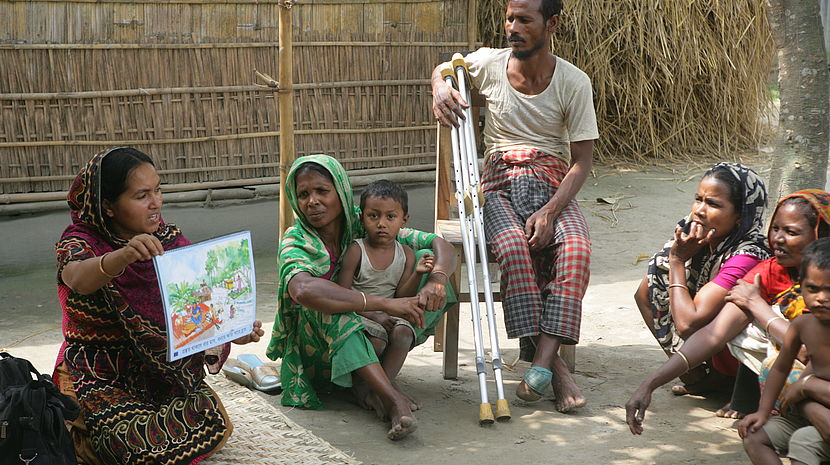DRR - Inclusion key to resilience

Preparedness for disaster - Inclusive mock drill in Bangladesh
CBM/CDD
From 14-18 March 2015 the World Conference on Disaster Risk Reduction will be held in Japan. This is the culmination of the process to develop the Post-2015 Framework for Disaster Risk Reduction (DRR). CBM, with partners, has been advocating to ensure the framework is disability-inclusive, and will be participating in several sessions during the conference.
CBM supports disability-inclusive Post-2015 DRR framework
The 3rd UN World Conference on Disaster Risk Reduction (WCDRR) will be held in Sendai, Japan, from 14-18 March 2015. This will be the culmination of the process to create a Post-2015 framework on Disaster Risk Reduction (DRR), which aims to reduce the impact of natural disasters.
Since 2012 CBM, with partners, has been advocating to ensure that the post-2015 framework is disability-inclusive. Persons with disabilities are among the most disproportionately affected people during emergencies and should be actively involved in all emergency management cycle work. Inclusive communities are more resilient communities.
Great progress has been made - Disability stakeholders have been very much involved in the UN process leading to the current draft framework, and the text includes references to disability-inclusion, accessibility and universal design in several key areas. The organisers of the conference have committed to make the event accessible to persons with disabilities.
Questions and Answers on CBM, Disaster Risk Reduction and Sendai
Gordon Rattray is Communications Coordinator at CBM’s Emergency Response Unit in Brussels.
In March he will participate on the 3rd UN World Conference on Disaster Risk Reduction (WCDRR) in Sendai/Japan from 14-18 March. We asked him some questions concerning the conference and CBM’s involvement.
Participating in the Sendai conference
At the Sendai conference, there will several sessions on all levels either dedicated to disability-inclusion or where disability-inclusion will be a very relevant component on the agenda. CBM and partners will be attending, speaking, participating and reporting. To follow events live, check the website, blog and social media as follows:
- Twitter @CBMworldwide
- Facebook CBMInternational
- Hashtags #WCDRR, #DiDRR
- Web www.cbm.org
- Blog http://blog.cbm.org
Humanitarian Action
CBM working with local partners to ensure that people with disabilities are included at all levels of disaster preparedness and response
Read more